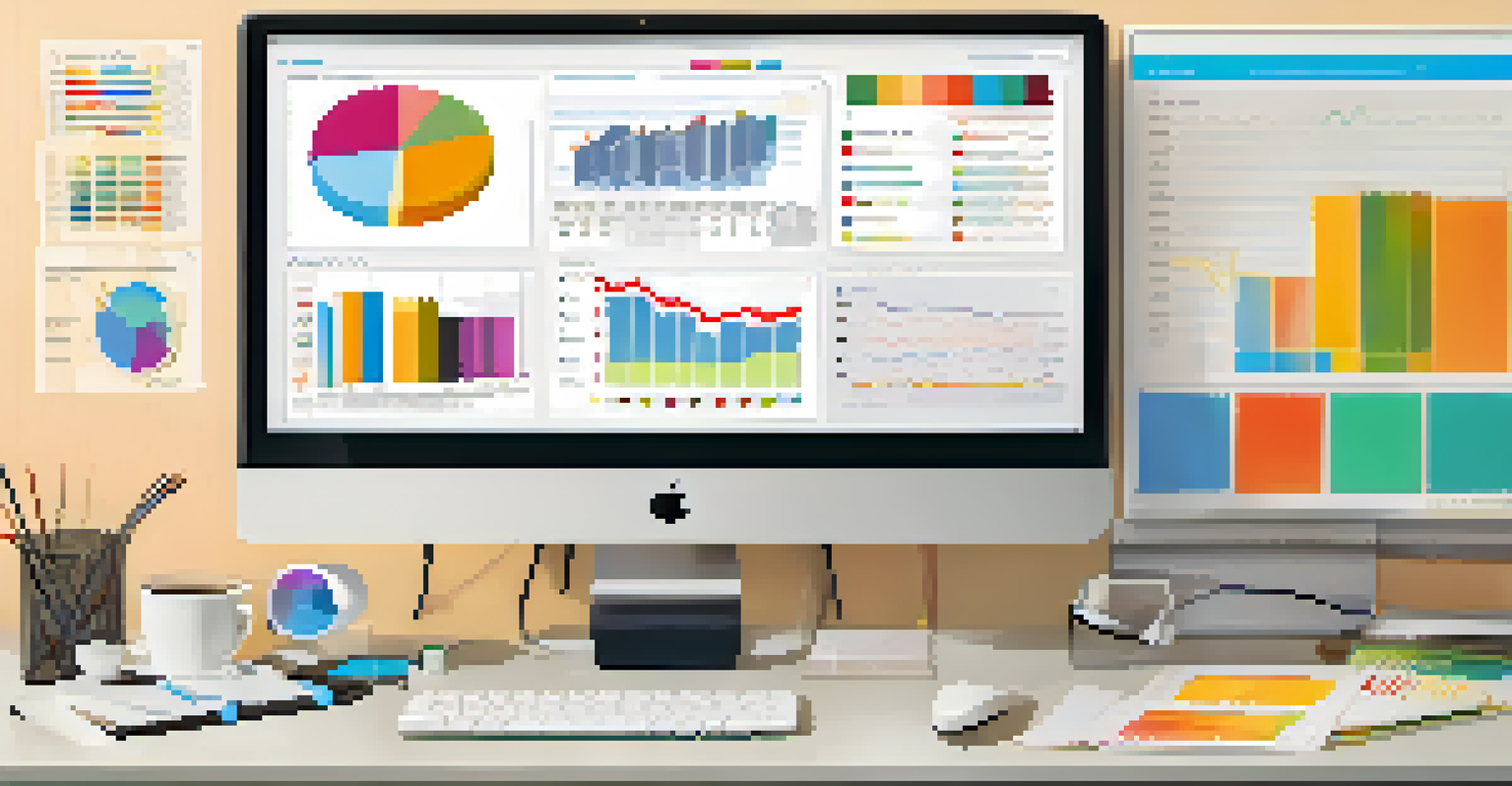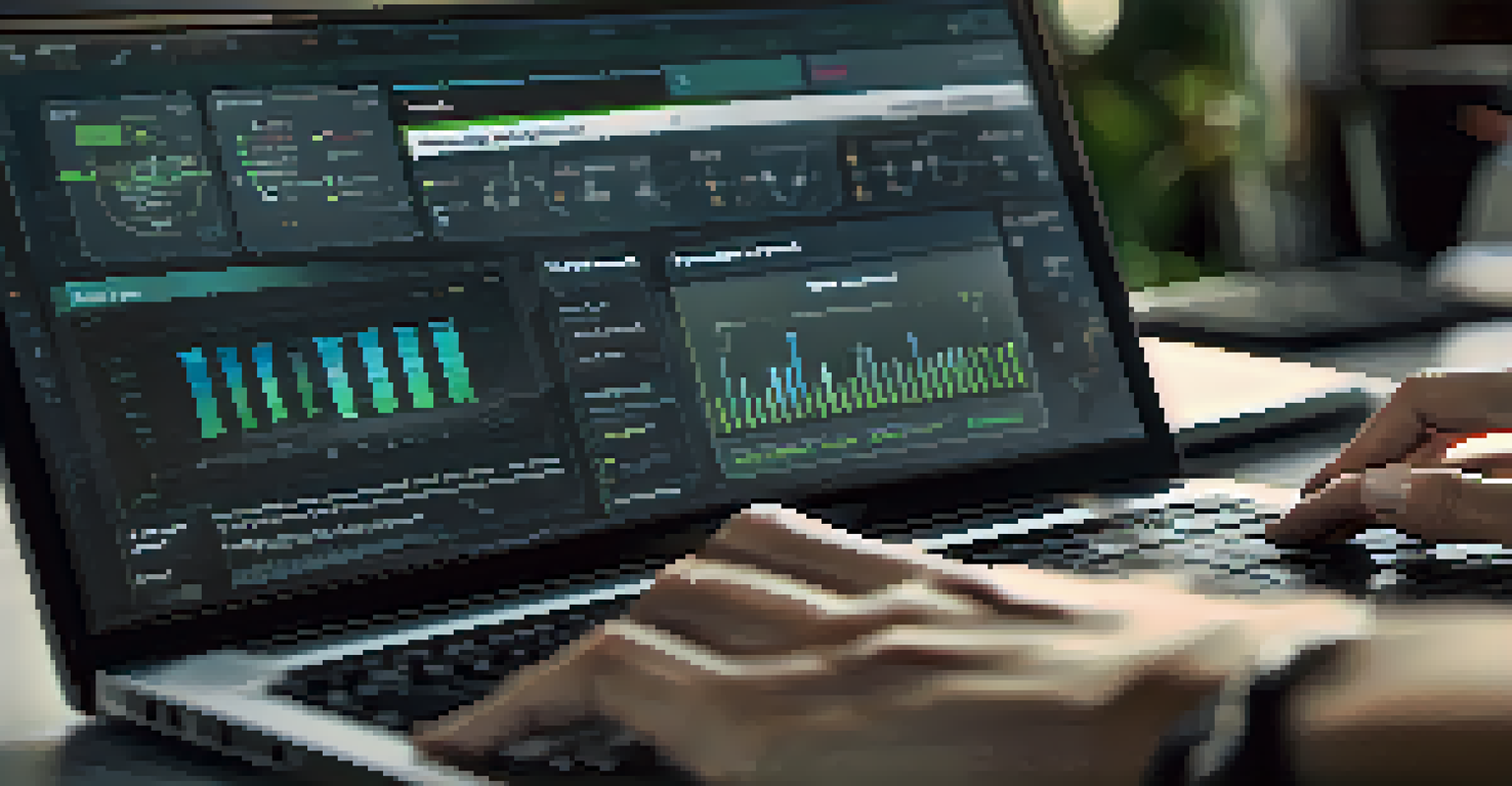Performance Tracking Tools for Remote Teams: A Guide

Understanding the Importance of Performance Tracking
Performance tracking is crucial for remote teams to ensure that goals are met and productivity is maintained. When team members are scattered across different locations, it can be challenging to assess how well everyone is performing. By implementing effective tracking methods, leaders can gain insights into individual and team performance, fostering accountability and motivation.
What gets measured gets managed.
Moreover, tracking performance helps in identifying areas for improvement. For instance, if a team consistently misses deadlines, it may indicate a need for better time management tools or clearer communication. Addressing these issues proactively can enhance overall team effectiveness and satisfaction.
Lastly, performance tracking can also support employee development. Regular feedback, paired with performance metrics, allows team members to understand their strengths and weaknesses, paving the way for targeted training and personal growth.
Key Features to Look for in Performance Tools
When choosing performance tracking tools, it's essential to consider features that align with your team's needs. Look for tools that offer real-time data analytics, as this allows for quick adjustments and better decision-making. Additionally, user-friendly interfaces can significantly enhance adoption rates among team members.

Another vital feature is integration capabilities. A tool that seamlessly works with existing software—like project management or communication platforms—can save time and reduce frustration. This integration ensures that data flows smoothly between applications, providing a comprehensive view of performance.
Importance of Performance Tracking
Performance tracking is essential for remote teams to monitor productivity, identify areas for improvement, and support employee development.
Lastly, consider tools that provide customizable reporting options. Different teams may have unique metrics for success, so having the flexibility to tailor reports is invaluable for tracking progress and sharing results with stakeholders.
Popular Performance Tracking Tools for Remote Teams
There are several performance tracking tools that have gained popularity among remote teams. Tools like Asana and Trello help in managing tasks while offering visual progress tracking features. These platforms allow teams to see who is working on what, making it easier to identify bottlenecks and redistribute tasks as necessary.
Feedback is the breakfast of champions.
Another great option is Monday.com, which provides a highly visual interface for tracking project statuses and team workloads. Its versatility allows teams to customize their workflows, ensuring that everyone is aligned and aware of their responsibilities.
For those focused on time management, tools like Toggl and Clockify offer robust time tracking features. These applications help team members log their hours and analyze how much time is spent on different projects, ultimately leading to better time allocation.
Integrating Performance Tools with Existing Systems
Integrating performance tracking tools with your existing systems can enhance efficiency and collaboration. Start by identifying platforms your team already uses and look for performance tools that offer easy integration options. This strategy minimizes disruption and ensures that team members can continue using familiar software.
For instance, if your team uses Slack for communication, consider performance tools that integrate with Slack to send updates and reminders directly in your chat channels. This keeps everyone informed without having to switch between multiple applications, streamlining workflow.
Key Features of Tracking Tools
Choosing the right performance tracking tools involves looking for real-time analytics, integration capabilities, and customizable reporting.
Additionally, training your team on how to utilize these integrated systems is crucial. Offering tutorials or workshops can help team members feel comfortable with the tools, maximizing their potential and ensuring a smooth transition.
Setting Clear Expectations and Goals
To effectively use performance tracking tools, it's vital to set clear expectations and goals. Before implementing any tool, involve your team in discussions about what success looks like. This collaborative approach ensures everyone is on the same page and understands the importance of their contributions.
Regularly revisiting and adjusting goals is also essential as project demands and team dynamics change. By keeping the lines of communication open, you can help your team stay motivated and focused on the objectives that matter most.
Moreover, linking individual performance to team goals creates a sense of ownership. When team members see how their work impacts the larger picture, they are more likely to stay engaged and committed to achieving those goals.
Fostering a Culture of Feedback and Recognition
Creating a culture that values feedback and recognition is key to leveraging performance tracking tools effectively. Regular check-ins and performance reviews can help team members understand how they are doing and where they can improve. This consistent communication builds trust and encourages a growth mindset.
Recognizing achievements, no matter how small, can boost morale and motivation within the team. Simple gestures like shout-outs during meetings or using performance tools to highlight top performers can go a long way in fostering a positive work environment.
Cultivating Feedback and Recognition
Fostering a culture of feedback and recognition enhances team morale and engagement, making it easier to leverage performance tracking tools effectively.
Encouraging peer feedback is another way to promote a culture of recognition. Team members can share insights with one another, creating a supportive atmosphere where everyone feels valued and empowered to contribute.
Evaluating and Adjusting Performance Tracking Strategies
Finally, it's essential to regularly evaluate and adjust your performance tracking strategies. What works for one team may not necessarily work for another, so it’s crucial to gather feedback from your team members and assess the effectiveness of the tools. Conducting regular surveys or feedback sessions can provide valuable insights into what changes need to be made.
Additionally, keep an eye on industry trends and new technology that may enhance your current setup. Staying adaptable and open to change can help your remote team stay competitive and engaged.

Ultimately, the goal of performance tracking is to foster a productive and supportive environment. By being willing to refine your approach, you can ensure that your team continues to thrive, no matter where they are located.